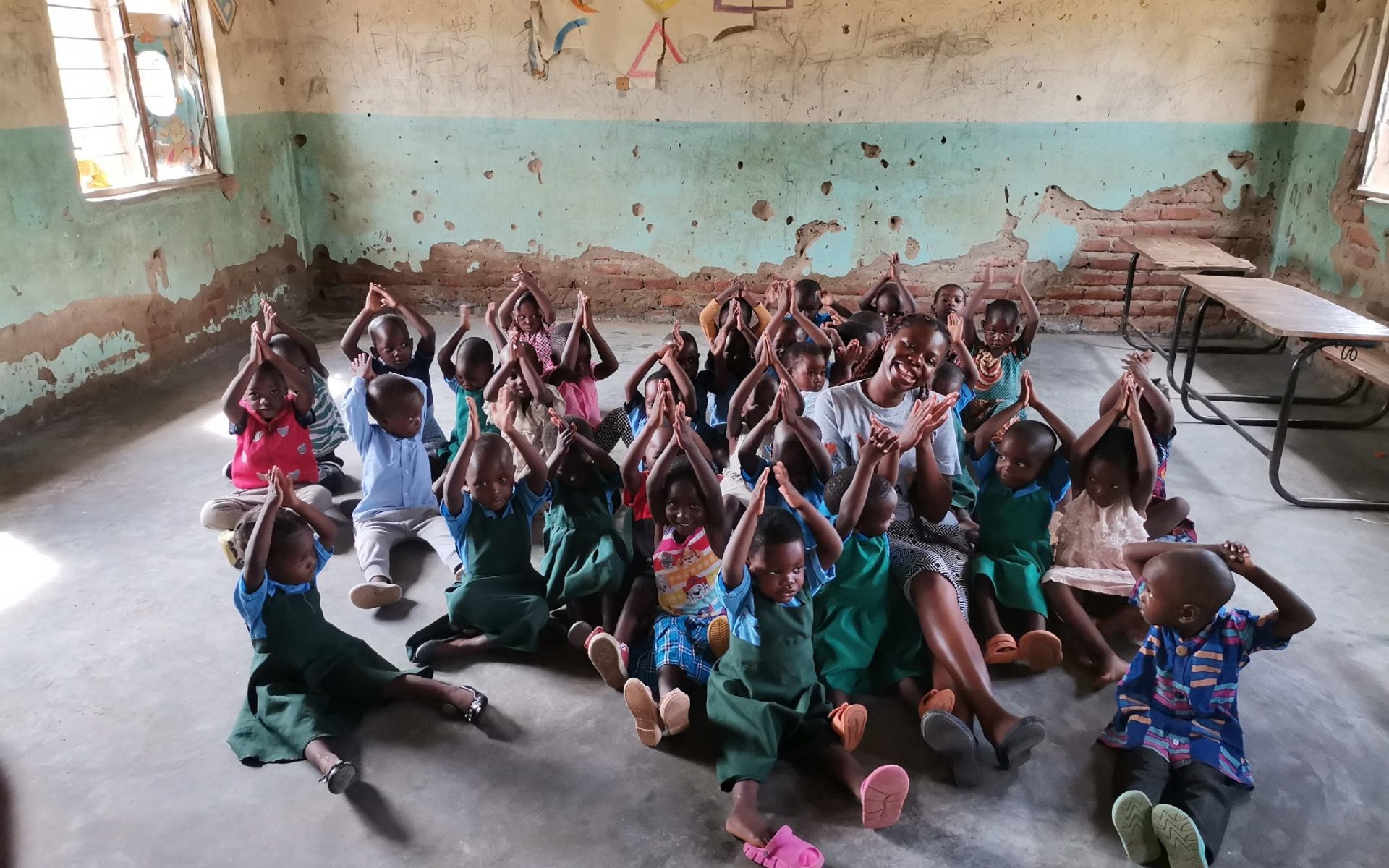When I first arrived as a CorpsAfrica Volunteer, I felt lost. I had so many ideas but didn’t know where to start. Should I talk to village leaders? Visit homes? Observe from a distance? Join a youth club?Play netball with the girls?One morning, as I wandered through the village, I heard laughter coming from a small building. I followed the sound and found a group of children, no older than five, clapping and singing. Their tiny hands patted the ground, dust rising around them. Their joy was infectious, and for the first time, I felt a pull. Maybe this was where I was meant to be.
At first, I just observed. But one day, when the teacher stepped out, the children turned to me with expectant eyes. I hesitated, then picked up a piece of chalk and drew a simple sun on the board.“That’s the sun!” a child shouted.“Yes,” I said, smiling. “Now, who can draw a tree?”Soon, the board was filled with trees, houses, and stick figures. I realized I didn’t need an invitation, I just had to step in.
I started visiting the Community-Based Childcare Centre (CBCC) regularly, helping the children with counting and songs. But as the days passed, I noticed something troubling.The floor was cracked, dry, and dusty. By noon, their tiny legs were covered in dirt and insect bites. Some days, in the middle of singing, a child would cry out, scratching furiously. Their uniforms, bright and clean in the morning, were dusty and stained by midday. Many owned only one uniform, washed each evening and worn damp the next morning.One afternoon, a little boy whimpered beside me, rubbing his legs together with another insect bite. I looked around and saw other children scratching and shifting uncomfortably. It was normal for them. They had learned to live with it.
That night, I couldn’t stop thinking about those restless little bodies, too busy fighting discomfort to focus on learning. Something needed to change.At the next community meeting, I spoke up. At first, there was silence. Then, parents began nodding. One mother stood and said, “We’ve always wanted to fix it, but we didn’t know how.” And just like that, a plan began to form.The community came together in a way I hadn’t expected. Parents brought sand to smooth the floor. Some brought bricks, while others mixed mud to seal the cracks in the walls. Even young men without children at the CBCC helped, fixing holes and making the space safer. It took time, but slowly, the classroom transformed. The walls were sealed, blocking out insects. A proper floor was put in, reducing dust. The children now had a clean floor to sit on.
A few days later, I arrived at the CBCC as usual. The children were singing, their voices filling the room. But this time, no one cried out from insect bites. No one scratched their arms. Their uniforms stayed cleaner. As I sat among them, a little girl leaned over and whispered, “Ndikumavala uniform daily komaso Atule sakundiluma.” Now, I wear my uniform every day, and the big ants don’t bite me anymore.A lump formed in my throat. I had come to this village thinking I needed to bring change. But the truth was, the community already had the power to change things; they just needed a reminder of what they could do together. That day, as I watched the children laugh without discomfort, I realized something important. Impact isn’t always about big projects. Sometimes, it’s about small actions: a smoother floor, a sealed wall, a safer space. And sometimes, that’s all it takes to change everything.

